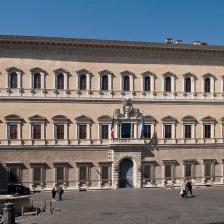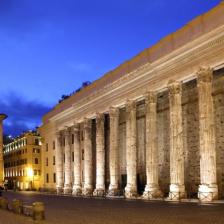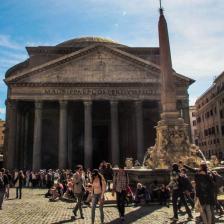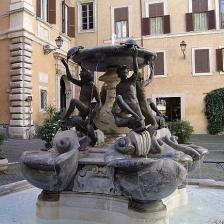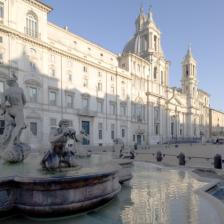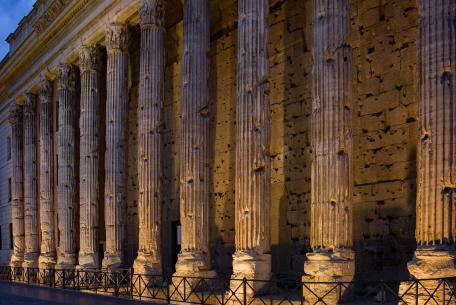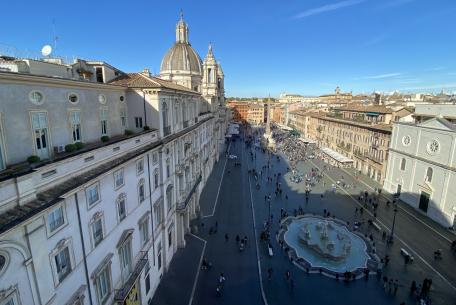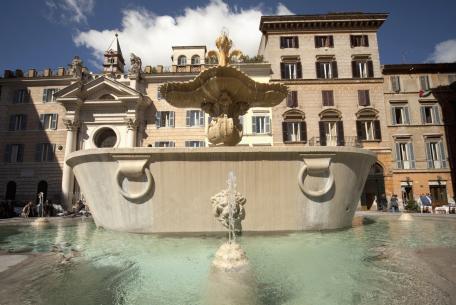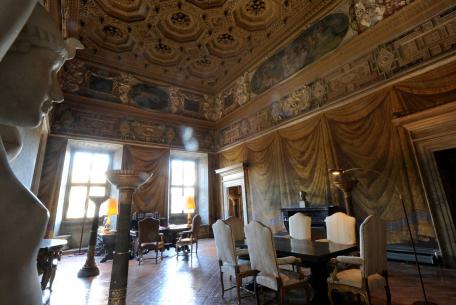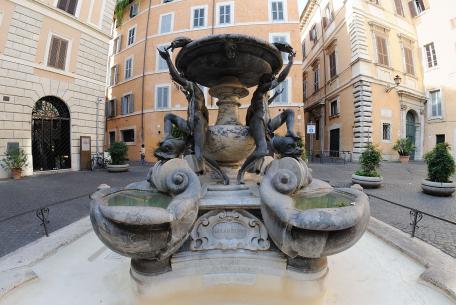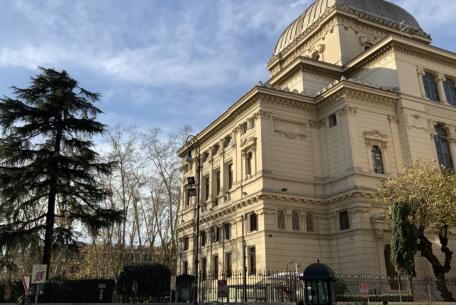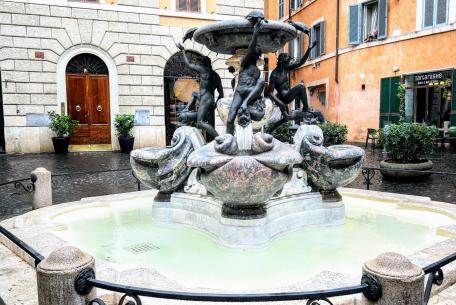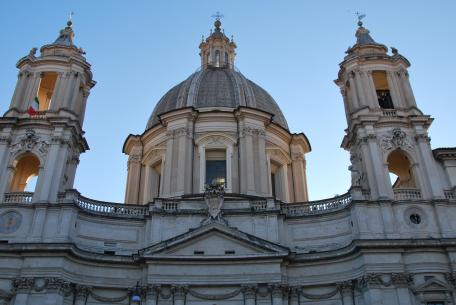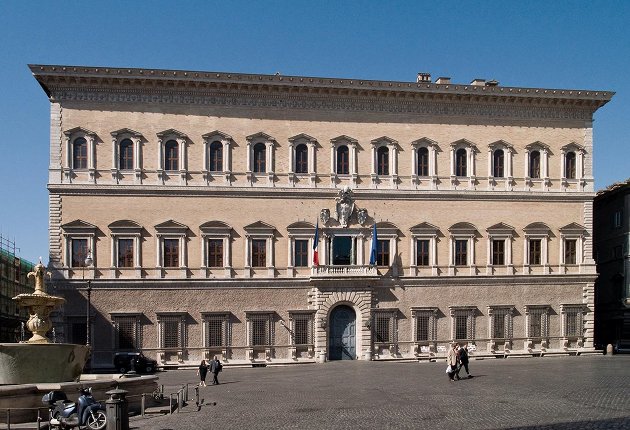
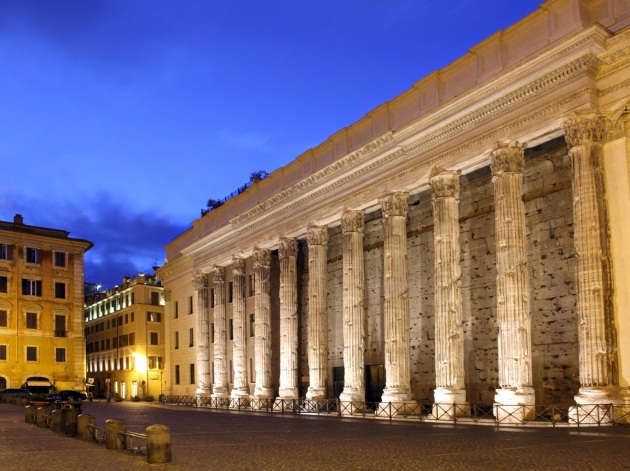
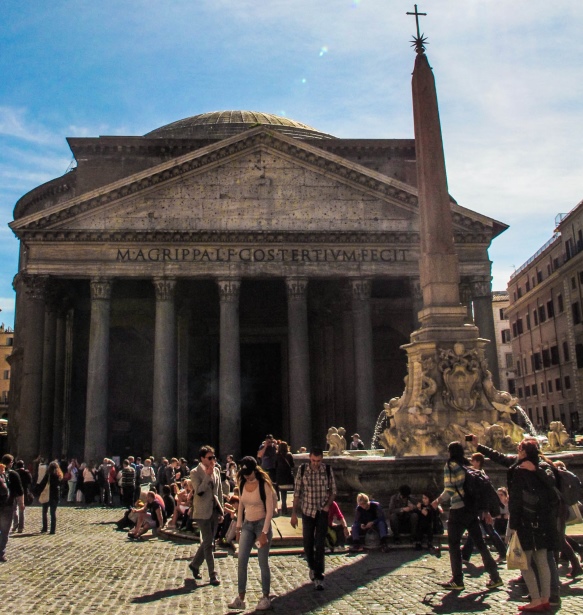
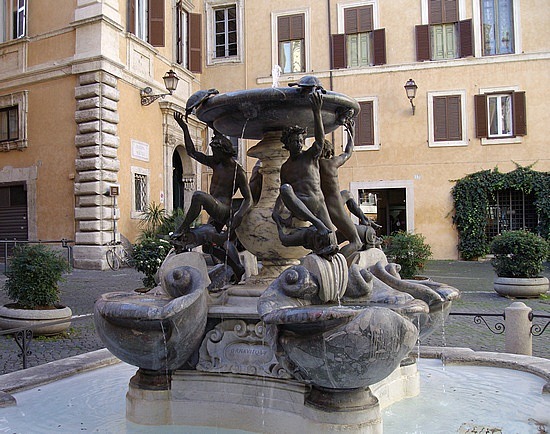
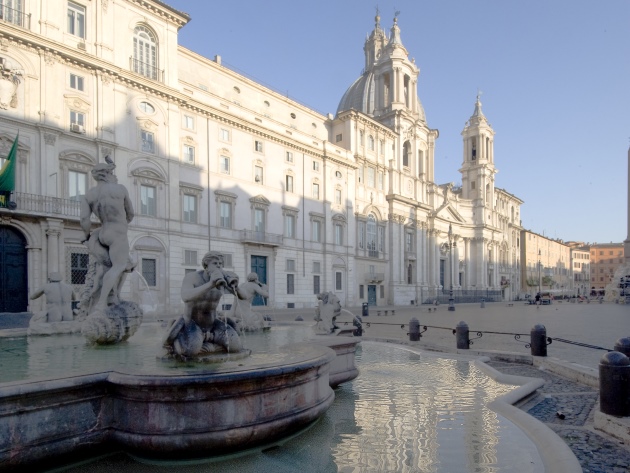
Baroque Rome, in the area between the Pantheon and Piazza Farnese, is the magnificent backdrop of cinematography that often evokes different suggestions: the city of the working-class or nobility, easy-going and cynical, sometimes mysterious or dramatic, and its features combine with the history of monuments, palaces, and alleys.
In Piazza della Rotonda, the great Vittorio De Sica shoots a dramatic scene of "Umberto D." (1952), one of the most relevant films of Italian Neorealism. A former ministerial official, Umberto, struggles to survive on his meagre pension and begs under the colonnade of the Pantheon. An acquaintance comes by, and feeling ashamed, Umberto pretends to be there by chance. No other Italian has so touchingly portrayed the loneliness of the elderly, aggravated by poor economic possibilities.
The sensual Monica Vitti meets the charming Alain Delon in Piazza di Pietra, inside the Temple of Hadrian, the seat of the Rome Stock Exchange. The film is "L'Eclisse" (Eclipse-1962), the latest black and white film by Michelangelo Antonioni. The French actor plays Piero, a cynical stockbroker; Vitti is the disillusioned, restless and sentimental Vittoria, a young bourgeois woman. Even today, the noise and chaos of the stock exchange scene remind us of an all too contemporary non-communication.
Romolo (Maurizio Arena) and Salvatore (Renato Salvatori), who live in Piazza Navona, are the likeable and bold characters of “Poveri ma belli” (Poor, But Handsome, or A Girl in Bikini), directed by Dino Risi in 1956. In the 1950s, the centre of Rome retained its working-class appearance; it was not, in fact, unusual for two "commoners" to live in the spectacular Baroque square. Likewise, in Vittorio De Sica's Oscar-winning "Ieri, oggi e domani" (Yesterday, Today and Tomorrow-1963), the gorgeous Sophia Loren, in the role of the call girl Mara, occupies a penthouse between piazza Navona and Tor Sanguigna. The film entered the universal collective imagination with the unforgettable Loren's striptease show in front of an enchanted Marcello Mastroianni.
Pietro Germi chooses the building at number 44 of Piazza Farnese as the location for the noir “Un maledetto imbroglio” (The Facts of Murder-1959). Germi, in the double role of director and protagonist, adapts the film from "Quer pasticciaccio brutto di via Merulana" by Carlo Emilio Gadda, a masterpiece of Italian literature of the 20th century. The result is one of the best detective films of Italian cinema. In 1977, Steno also set his thriller “Doppio delitto” (Double Murder) in Piazza Farnese: among ancient, noble palaces and alleys animated by craft shops, it is amazing to see Mastroianni, Peter Ustinov, Ursula Andress, and Agostina Belli together on the screen.
In Piazza Mattei, in the heart of the Old Jewish Ghetto, stands the 16th-century Palazzo Costaguti, a very popular location. It is the imaginary Hotel Imperial in "Nina" (1976) by Vincent Minnelli and the residence of the extravagant Giangiacomo Pigna Corelli (Alberto Sordi) in the irresistible "Troppo forte" (1986) by Carlo Verdone. Here, Tom Ripley, played by an extraordinary Matt Damon, lives during his stay in Rome in the claustrophobic Anthony Minghella's thriller "The Talented Mr Ripley" (1999). In the same film, the opening scene is shot in a 1950s-style Piazza Navona. In the centre of Piazza Mattei is the beautiful Fountain of the Turtles, captured in 2012 by Woody Allen in "To Rome with Love".
Our brief look at Rome as it appeared on the silver screen ends with the ever-charming Julia Roberts as the New York writer, Elizabeth Gilbert, in “Eat Pray Love” (2010) by Ryan Murphy. Again, we are in the suggestive Piazza Navona; Roberts is enjoying an ice cream on a bench, seated next to two nuns. Behind her, the imposing facade of the Church of Sant'Agnese in Agone, a masterpiece by Borromini.
 Condividi
Condividi












































